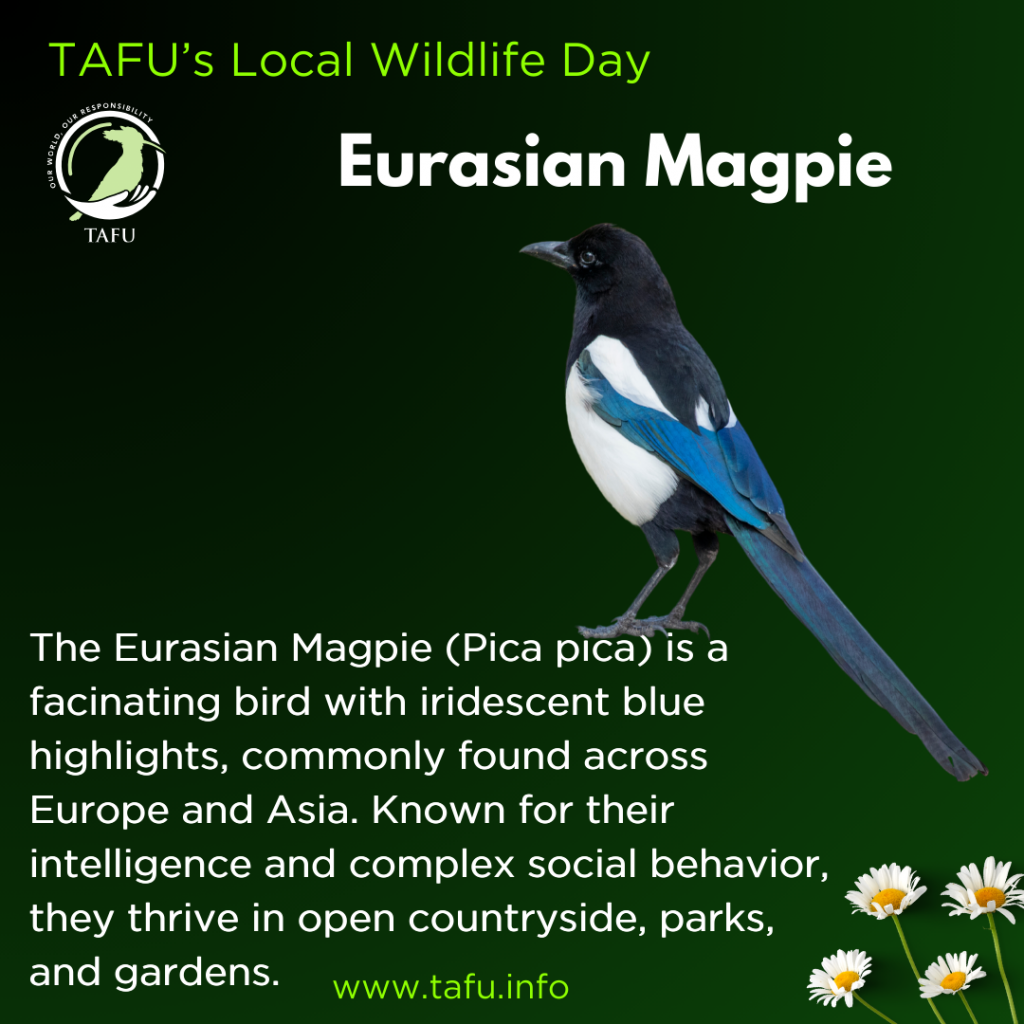Eurasian Magpie
As part of the countdown to TAFU’s Local Wildlife Day on the 11th of July – Species no. 12.
Stay tuned – 31 more days and 31 more species until then!
The Eurasian Magpie (Pica pica) is a highly intelligent bird recognised by its distinctive black and white plumage with iridescent blue on its wings and tail. It measures about 44-46 cm in length, has a wingspan of 52-62 cm and is part of the crow family (Corvidae). Eurasian magpies are widespread across Europe and Asia, inhabiting a range of environments from open countryside and agricultural areas to parks and suburban gardens.
Magpies are omnivorous, feeding on a varied diet that includes insects, small mammals, eggs, carrion, and plant matter such as acorns and grains. They are known for their adaptability and can often be seen scavenging and caching food for later use. During the breeding season, which occurs in spring, magpies build large, domed nests in tall trees or bushes, using sticks cemented with mud and lined with fine roots.
Magpies are not only known for their bold behaviour but also their remarkable cognitive abilities. Eurasian Magpies have been observed using tools, recognising themselves in mirrors, and exhibiting complex social behaviours, such as performing early morning checks for roadkill to get their hands on fresh food.
To help support Eurasian Magpies we can all maintain diverse and wildlife-friendly gardens and avoid the use of pesticides. Though these magpies are highly adaptable, it’s important to remember that preserving their natural habitats and providing suitable nesting sites are crucial for maintaining their populations

